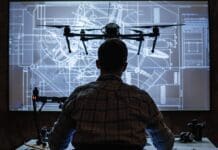This post is also available in:
 עברית (Hebrew)
עברית (Hebrew)
The US Pentagon is planning to apply mind-controlled technology in military environments. The Defense Advanced Research Projects Agency DARPA is selecting teams to develop a “neural interface” that would both allow troops to connect to military systems using their brainwaves and let those systems transmit back information directly to users’ brains.
The program called the Next-Generation Non-Surgical Neurotechnology, or N3, aims to combine the speed and processing power of computers with humans’ ability to adapt to complex situations. In other words, the technology would let people control, feel and interact with a remote machine as though it were a part of their own body.
The interface could be used to help a pilot coordinate a fleet of drones with their thoughts or troops to control a remotely deployed robot by using their brain’s motor signals. Cybersecurity specialists could even connect to the system to monitor different parts of a computer network with their physical bodies, according to Al Emondi, the program manager at DARPA’s Biological Technologies Office.
Through its past Revolutionizing Prosthetics program, DARPA has already created a prosthetic limb that disabled veterans can control using an electrode implanted in their brain. Now the agency wants to create a similar apparatus for able-bodied service men and women that doesn’t require surgical implants.
The N3 program is divided into two tracks: non-invasive interfaces that sit completely outside the body, and minutely invasive interfaces that could require users to ingest different chemical compounds to help external sensors read their brain activity. In both tracks, technologies must be “bidirectional,” meaning they can read brain activity and also write new information back to the user.
Emondi told nextgov.com that scientists are only beginning to figure out how the brain’s 100 billion neurons interact, so controlling those interactions is next to impossible. Instead, he said it’s better to think of N3 technology as means to use a computer or smartphone without a mouse, keyboard or touch screen.
Given the intensely personal nature of the technology, DARPA is requiring designs to comply with a number of health and safety requirements, and also address any potential cybersecurity concerns. “As we approach a future in which increasingly autonomous systems will play a greater role in military operations, neural interface technology can help warfighters build a more intuitive interaction with these systems,” said Emondi.

























